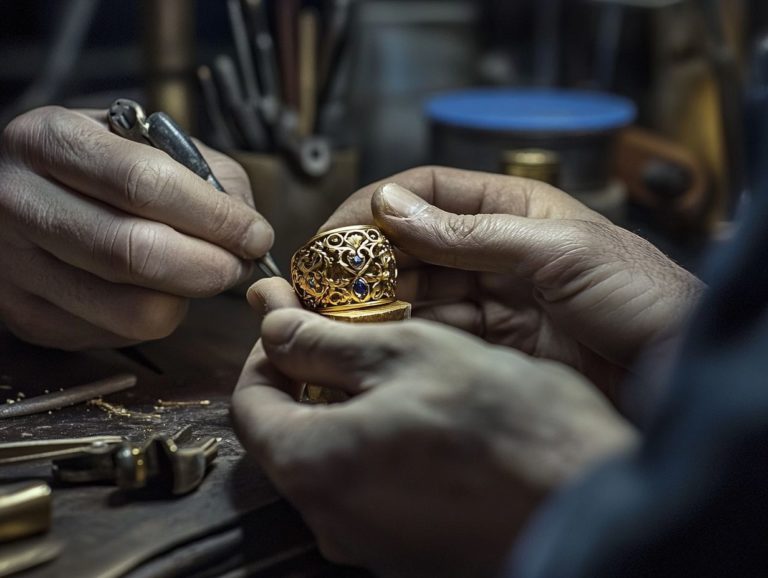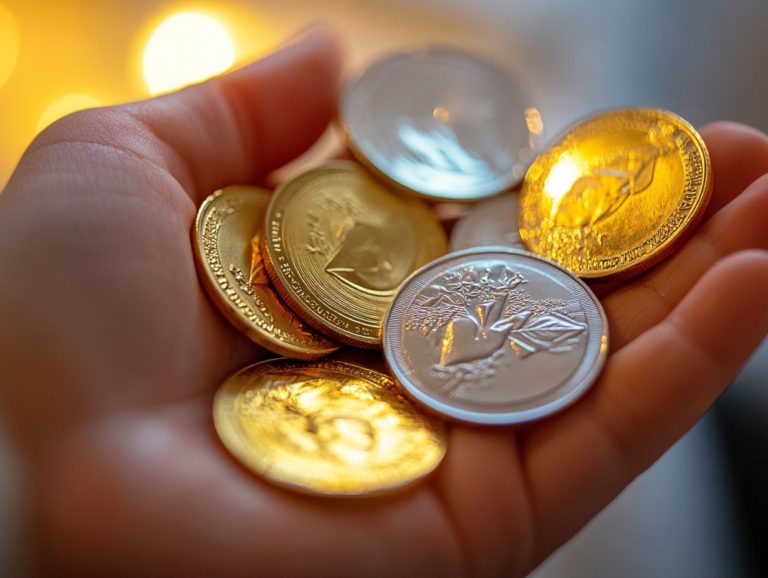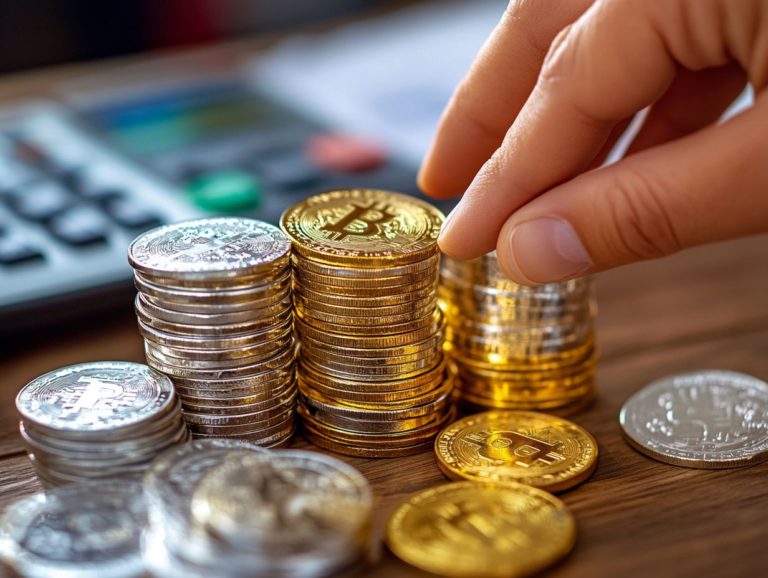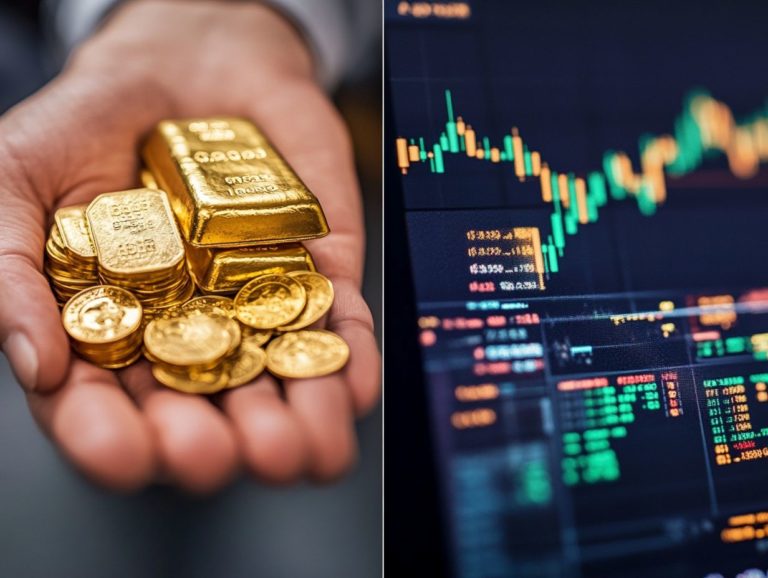Understanding the Intrinsic Value of Precious Metals
Precious metals have captivated people for generations, symbolizing wealth and power while fulfilling practical roles across various industries.
Join us on an exciting journey to explore these valuable resources, revealing their rich history and cultural significance. You will also learn about the factors that shape their true value and weigh the benefits and risks of investing in them.
From industrial applications to effective storage and security measures, this guide equips you with essential knowledge about precious metals. Embark on this journey to uncover their multifaceted nature and enduring allure.
Contents
- Key Takeaways:
- What are Precious Metals?
- The History of Precious Metals
- The Intrinsic Value of Precious Metals
- Investing in Precious Metals
- Uses of Precious Metals
- Protecting Your Precious Metals
- Frequently Asked Questions
- What is intrinsic value when it comes to precious metals?
- How is intrinsic value different from market value?
- What factors contribute to the intrinsic value of precious metals?
- Why is understanding intrinsic value important?
- Does the intrinsic value of a precious metal always increase over time?
- Are there other factors that can affect intrinsic value?
Key Takeaways:
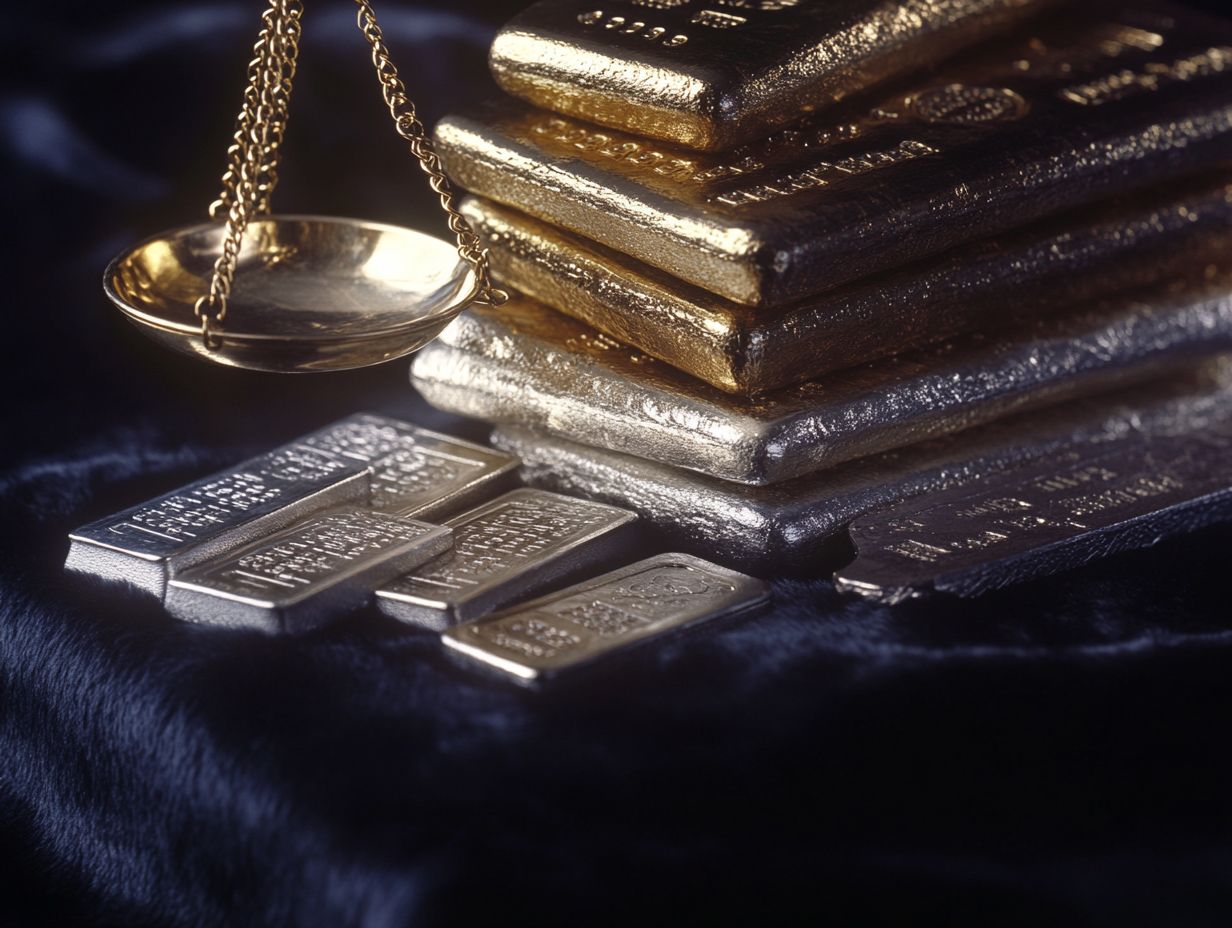
- Precious metals are rare and valuable.
- Their value is influenced by scarcity and demand.
- They have diverse uses beyond jewelry.
- Investing in them can be a smart strategy.
What are Precious Metals?
Precious metals are valuable metals like gold, silver, and platinum that people have cherished for centuries. They’ve served as essential monetary assets and reliable safe havens during times of economic upheaval.
People seek these metals not just for their stunning beauty but also for their liquidity and ability to hedge against inflation. This makes them a cornerstone of investment strategies, especially when market values fluctuate due to geopolitical developments.
Definition and Types
Precious metals are rare, naturally occurring metallic elements that carry significant economic value, including gold, silver, and platinum. These metals shine with high luster, resist corrosion, and are rare, making them highly desirable for both investment and industrial purposes.
Among these types, gold often steals the limelight due to its historical significance and universal acceptance as a currency alternative. Silver is celebrated for its affordability and versatile industrial applications, while platinum is prized for its rarity and exceptional catalytic properties.
The prices of these commodities fluctuate based on market supply and demand, geopolitical stability, and overall economic conditions. During times of economic uncertainty, investors often flock to precious metals, reinforcing their reputation as safe-haven assets.
The History of Precious Metals
The history of precious metals, especially gold, unfolds like an intricate tapestry woven through the ages by ancient civilizations that embraced gold not just as currency, but as a dazzling adornment and symbol of affluence.
This journey culminated in the establishment of the gold standard, a practice that reigned until its official abandonment in 1971.
Over the decades, gold has remained resilient at the center of numerous economic crises, consistently proving its worth as a lasting asset through significant historical moments such as the financial upheaval of 1980 and the transformative shifts in monetary policy in 1999.
Significance and Cultural Importance
Throughout history, gold has carried immense cultural significance, symbolizing wealth, power, and success. It influences investment decisions made by wealth managers and individual investors alike.
This precious metal is frequently regarded as a safe haven during economic downturns, sparking nuanced conversations about its role in various cultural narratives. From ancient Egypt to contemporary economies, societies have revered gold and other precious metals.
Silver and platinum also hold unique value, shaping perceptions of security and stability. Wealth managers often spotlight these assets when advising clients, especially during inflationary periods or market volatility, as they represent a time-tested strategy for wealth preservation.
The symbolic weight of these materials invites you to reflect more deeply on how they connect to societal values and individual aspirations.
Discover how you can start investing in these precious metals today!
The Intrinsic Value of Precious Metals

The value of precious metals, especially gold, depends on key factors. Supply and demand, market fluctuations, and broader economic conditions all influence their price and appeal as investments.
Understanding these elements can significantly enhance your investment strategy.
Factors that Determine Value
Key factors determine the value of precious metals, with supply and demand being fundamental. Trends in gold prices and inflation forecasts also play significant roles, affecting how quickly metals can be bought or sold.
Shifts in supply like new mining discoveries or changes in regulations can dramatically affect market availability.
On the other hand, demand changes with economic sentiment. During uncertain times, investors often turn to precious metals for safety.
Historical gold price trends reveal patterns that help predict future movements. Inflation forecasts are crucial as they can erode purchasing power, prompting more individuals to seek metals as a hedge.
Understanding these interrelations is essential for effective investment strategies.
Investing in Precious Metals
Investing in precious metals, particularly gold, offers advantages as a safeguard against inflation and a way to preserve wealth.
However, it’s vital to recognize the risks involved, which should be carefully considered in your investment approach.
Benefits and Risks
Investing in precious metals provides various benefits, especially their reputation as a safe haven during economic uncertainty. It’s equally important to consider the risks, such as market fluctuations and liquidity challenges.
For many investors, precious metals like gold and silver act as reliable hedges against inflation and currency devaluation. They offer a sense of security when traditional markets are volatile.
These tangible assets usually retain their value and can buffer against financial downturns. However, the reality of price fluctuations can present challenges.
Sudden market spikes or drops can impact your investments and create unpredictable timelines for returns, potentially catching you off guard.
Uses of Precious Metals
Precious metals have diverse applications from essential roles in electronics and industry to their exquisite use in jewelry.
Each application has a melt value closely tied to current market conditions, highlighting the dynamic nature of these resources.
Industrial and Commercial Applications
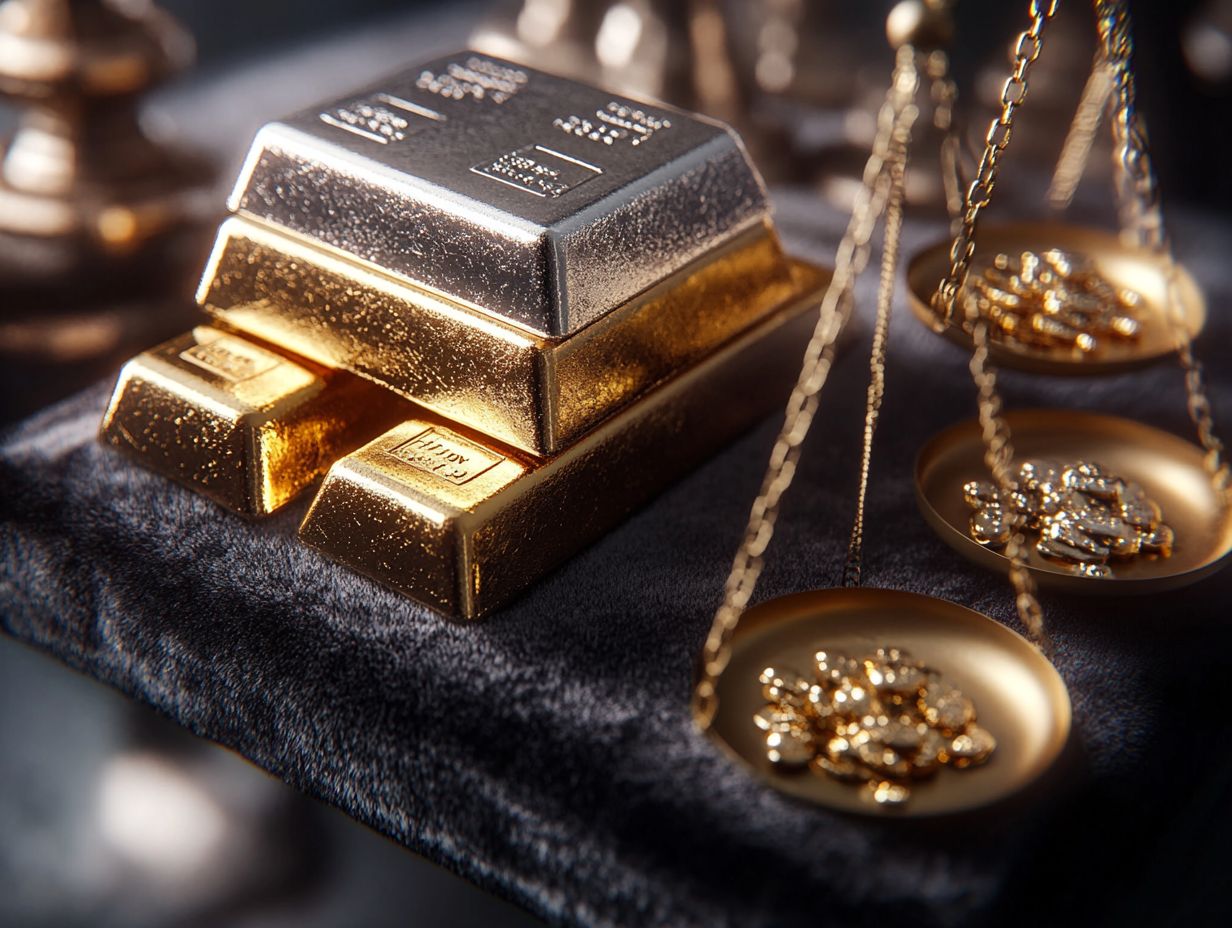
Precious metals play key roles in multiple industrial applications, especially in electronics and jewelry. Their unique properties enhance both functionality and aesthetics, contributing to market value.
In electronics, metals like gold and silver are essential for manufacturing components such as connectors and circuit boards. Their excellent conductivity and corrosion resistance ensure devices from smartphones to high-performance computers are reliable and durable.
In the jewelry sector, these metals are prized for their radiant luster and remarkable durability, significantly affecting their desirability in the luxury market.
As demand for cutting-edge devices and intricately designed jewelry grows, the relationship between these applications and market value underscores the vital role precious metals play in both industrial innovation and aesthetic appeal.
Protecting Your Precious Metals
Protecting your precious metals is crucial for ensuring your investment’s safety. You can achieve this through various storage and security measures designed to safeguard these valuable assets from theft and market fluctuations.
Taking these steps ensures that your investments remain secure and ready for growth.
Storage and Security Measures
Effective storage and security measures for your precious metals include options like safe deposit boxes, home safes, and insurance to mitigate risks associated with theft and loss.
Choosing the right storage option? It’s vital to consider what s best for you! Safe deposit boxes are often regarded as the safest choice, offering added security within banking facilities that protect your valuables from environmental damage and potential theft. However, access can be limited, especially during emergencies.
On the other hand, home safes provide immediate access and peace of mind. Selecting the right one is essential. Look for safes with high ratings and fireproof features to ensure maximum protection. Don’t forget about insurance; it s a critical component that helps preserve the value of your assets and acts as a safety net in case of unforeseen circumstances.
By evaluating these strategies, you can effectively safeguard your precious metals against loss while ensuring they maintain their value.
Frequently Asked Questions
What is intrinsic value when it comes to precious metals?
Intrinsic value refers to the inherent worth of a precious metal based on its physical characteristics, such as purity and rarity, rather than its market price. Understanding this concept is crucial, especially when considering the tax implications of precious metals.
How is intrinsic value different from market value?
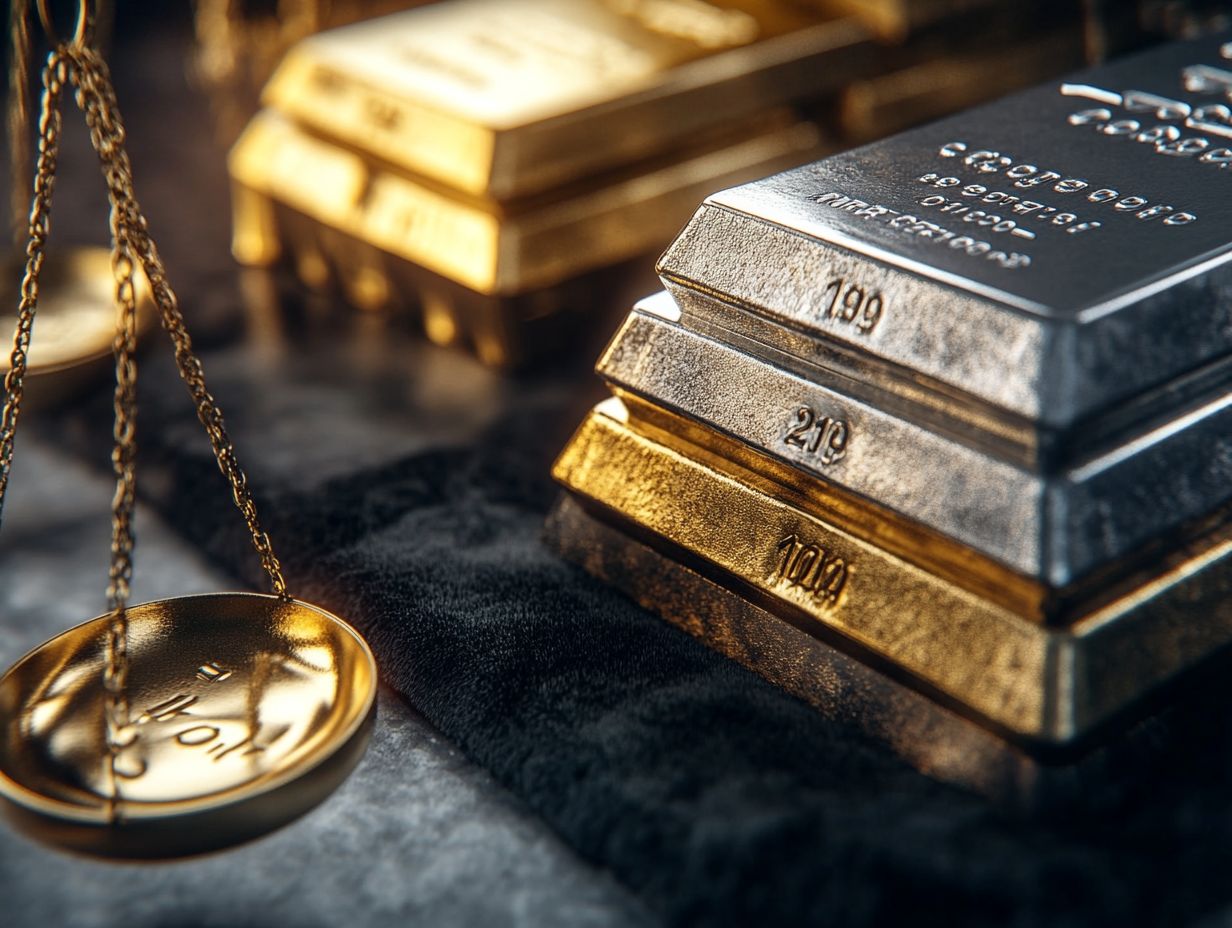
Intrinsic value is determined by the quality and scarcity of a precious metal, whereas market value fluctuates due to economic factors and supply and demand.
What factors contribute to the intrinsic value of precious metals?
The rarity, purity, and physical properties of a precious metal, including its durability and conductivity, all influence its intrinsic value.
Why is understanding intrinsic value important?
Understanding intrinsic value helps investors make informed decisions about buying and selling precious metals, offering a more accurate assessment of their long-term value and highlighting the role of precious metals in diversification.
Does the intrinsic value of a precious metal always increase over time?
Not necessarily. Like any investment, the intrinsic value can be influenced by market fluctuations and economic conditions. It’s crucial to conduct thorough research and consider all factors before investing.
Are there other factors that can affect intrinsic value?
Yes, factors such as political stability, technological advancements, and changes in industrial demand can also impact the intrinsic value of precious metals.
Interested in learning more about investing in precious metals? Don’t hesitate to reach out for more information!

